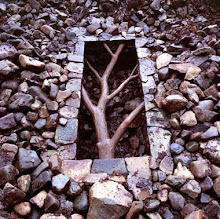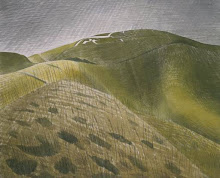
One important aspect of the spiritual journey, I find, is the art of learning when to take a hint. My spiritual path has been colourful so far, and I have no expectations that it will become any less so. Having always been an instinctive polytheist, some years ago I became deeply interested in the various traditions associated with the Orishas, the Yoruba deities of west Africa who were taken to the New World in the horror of the Slave-trade. There they flourish, especially among Afro-Cuban and Afro-Brazilian communities, and indeed the various forms of Yoruba tradition are widespread among Hispanic communities in the US, especially in New York, Miami and Los Angeles, and anywhere where there has been wide immigration from the Caribbean.
Startlingly similiar to the Greek pantheon, the Orishas are a group of around 20 deities each of which has control over a particular area of life: the one I love and honour most of all, Ochun, is the goddess of fresh water, rivers, love, honey, sweetness, desire, and sensuality, whose colours are yellow and gold. Very often, they are syncretised with Catholic saints. Each of these beings is complex and multifaceted, and it must be emphasised just how immensely profound and beautiful I found Yoruba-derived sprituality to be. Embracing paradox and contradiction, dealing with life as it really is, it is astoundingly sophisticated, leaving any form of western Paganism in the dust, as far as I'm concerned. (After being exposed to the path of the Orishas, a lot of Druidry, for example, just came to seem like self-indulgent buggering about: people turning up to rituals dressed as Hindu brides, for example, or honouring spring with libations of Green Chartreuse, because of the colour.)
Central to all forms of the tradition is a reverence for the Ancestors, the Egun, and their presence and advice is sought in all things. Practitioners will always have a shrine to their ancestors, with glasses of fresh water, white flowers and candles, and perhaps photographs. They will be regularly offered food and drink and cigars. They can also be consulted through divination. This powerful sense of ancestral connection, which is both mysterious and everyday, is one of the most moving aspects of Yoruba tradition. Ancestors are considered to come before the Orishas, in the sense that ordinary worries and problems are taken to an individual's ancestral spirits before being bring them to the great powers.
The pantheon of the Orishas is one of the most vibrant, profound and beautiful spiritual conceptions I have ever come across. They are imagined not as gods and goddesses exactly, but as emissaries or great angels under the One God, Oludumare. Ellegua is the Orisha that you always start with; he is the youngest, and the mischievous, tricksterish, and amoral personification of chance. His colours are red and black, and he is visualised as an old man and as a young child. The chief of the Orishas under Oludumare himself (or herself) is Obatala, the personification of peace and purity, the Father of the Orishas. His colour is white. Yemaya is their mother, the Orisha of salt water, whose colour is blue. There is Shango, the virile god of war and thunder, whose colours are red and white, who is comically syncretised with a female saint, St Barbara. His wife is Oya, the tempestuous Orisha of storms and the whirlwind, but his paramour is Ochun. There is Orunmila, the Orisha who controls the intricate system of Ifa divination. There is Ogun, the blacksmith, who lives in the woods and rules over accidents and metals. There is Ochosi, the hunter, and Babalu Aye, the leprous Orisha of pestilence and recovery, whose sores are licked by dogs and who walks with a stick. There are also a large number of others, who vary between the various traditions. In Yorubaland, each city had a tutelary Orisha, who was worshipped by the people of that town; with the Middle Passage, people from different cities were mingled together, and now all the Orishas are honoured by all practitioners. They also were reduced in number; in Africa, the number of Orishas was given as ‘401’, the ‘one’ signifying potential infinitude. In the New World, the number hovers around twenty.
Anyway. Since moving in with my partner, who finds any form of spirituality wierd and off-putting, I'm sorry to say that my devotion to the Orishas has sagged. (A situation I intend to rectify - I can't continue to operate on spiritual standby in the way that I have been doing for over a year.) You can see the shrine to Ochun that I had in my old house above, by the way. On Saturday last, I picked up a book in Waterstones - Lewis Hyde's fantastic Trickster Makes This World, a poetic and anthropological study of the mythology of the Trickster figure, including Coyote, Raven, Legba, Loki and Hermes. One of the beings discussed is the orisha Ellegua, also known as Eshu. This, I recognised immediately, was a Big Hint. You don't ignore the deity who, like Hermes, represents the wildcard, the twist of fate, the windfall, the threshold and the boundary, the door-hinge, the stroke of luck and the nasty accident which no one could have foreseen. I'm standing at the threshold at the moment - on the verge of my first proper job, a move to a different city, the start of a new book. A new phase of life, in fact. So I took the hint, and last night (Mondays belong to Eshu) I made the prescribed offering: a handful of red and black sweeties, three copper pennies, a white candle, and a glug of dark rum, left at a nearby crossroads. As I did so, calling on Eshu to open my ways to good fortune and close my ways to bad fortune, I suddenly felt a huge sense of homecoming and relief. I walked home and fell asleep almost instantly.






